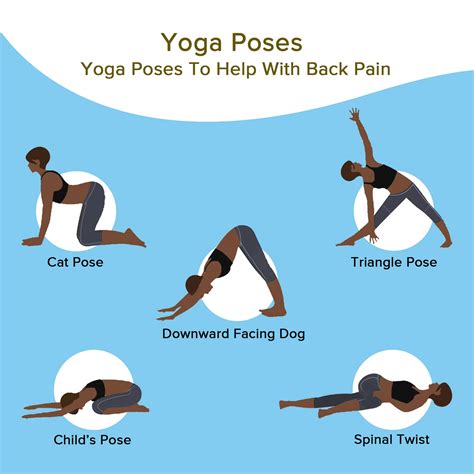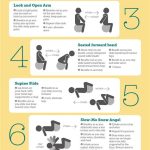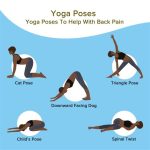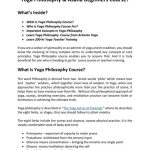Comprehensive Guide to Yoga Philosophy for Beginners: Key Concepts, History, and Practical Applications
Yoga is much more than a physical practice of postures and stretches—it is a rich philosophical system that encompasses ethical guidelines, mental disciplines, and spiritual insights. As a beginner, it can be challenging to understand the depth of yoga’s teachings without guidance. This article aims to explore the fundamental principles of yoga philosophy in a clear and accessible way, touching upon its historical origins, key concepts, current practices, and its future implications. With perspectives from various disciplines, this guide offers a balanced and comprehensive understanding of yoga philosophy.
Introduction
Yoga is often seen as a system of physical exercises or a relaxation technique, but its roots lie in ancient Indian philosophy. Yoga philosophy provides guidelines for living a balanced life, fostering spiritual growth, and understanding the nature of existence. In this guide, we break down the core elements of yoga philosophy, offering practical insights for beginners while maintaining respect for its historical and spiritual depth. We will address common misconceptions, highlight key concepts, and explain how yoga philosophy can be integrated into modern life.
Key Concepts
Yoga philosophy is built upon several core concepts that provide a foundation for understanding the practice in its entirety. These concepts include the following:
- Ashtanga (Eight Limbs of Yoga): A comprehensive system for self-development outlined in Patanjali’s Yoga Sutras. The eight limbs are: Yama (moral discipline), Niyama (personal observances), Asana (posture), Pranayama (breath control), Pratyahara (withdrawal of the senses), Dharana (concentration), Dhyana (meditation), and Samadhi (enlightenment).
- Karma: The law of cause and effect that teaches us that every action has a consequence, shaping our future experiences.
- Dharma: One’s duty or purpose in life, which varies according to personal, social, and spiritual factors.
- Moksha: Liberation from the cycle of birth and rebirth (samsara) through self-realization and enlightenment.
- Purusha and Prakriti: Purusha represents the consciousness or true self, while Prakriti refers to material nature or the physical world.
Historical Context
Yoga philosophy can be traced back over 5,000 years, with its earliest references found in the ancient Indian texts known as the Vedas. The development of yoga philosophy can be divided into several key periods:
| Time Period | Key Developments |
|---|---|
| Vedic Period (1500 BCE – 500 BCE) | The earliest concepts of yoga appear in the Vedas, focusing on rituals and sacrificial practices aimed at spiritual realization. |
| Upanishadic Period (800 BCE – 200 BCE) | The Upanishads introduced philosophical discussions on meditation, self-inquiry, and the nature of the soul. |
| Classical Period (200 BCE – 500 CE) | Patanjali’s Yoga Sutras were written during this time, formalizing the philosophy of Ashtanga yoga. |
| Medieval Period (500 CE – 1500 CE) | Tantric and Hatha yoga texts emerged, emphasizing physical postures, breath control, and energy practices. |
| Modern Period (1890 CE – present) | Yoga spread to the West, evolving into a global practice that integrates physical, mental, and spiritual components. |
Current State Analysis
In modern times, yoga has grown into a multi-faceted practice with varying interpretations and applications. While some view yoga primarily as a physical exercise, others approach it as a spiritual path. The current state of yoga philosophy can be understood through several lenses:
- Physical Yoga: Popularized in the West, this form emphasizes asana (postures) and flexibility. While it offers health benefits, critics argue that it often neglects the deeper philosophical roots of yoga.
- Spiritual Yoga: Rooted in the traditional texts, this practice focuses on meditation, self-inquiry, and spiritual development.
- Holistic Yoga: A balanced approach that integrates the physical, mental, and spiritual dimensions, promoting overall well-being.
Practical Applications
Yoga philosophy offers practical tools for personal growth, mindfulness, and ethical living. Key applications include:
- Mindfulness: By practicing Pratyahara and Dharana, individuals can cultivate awareness of their thoughts, emotions, and actions, leading to greater emotional balance and clarity.
- Stress Reduction: Techniques such as Pranayama (breath control) help reduce stress and promote relaxation.
- Ethical Living: The Yamas and Niyamas provide moral guidelines for treating oneself and others with respect and compassion.
Case Studies
To illustrate the practical benefits of yoga philosophy, consider the following case studies:
| Case Study | Outcome |
|---|---|
| Corporate Mindfulness Programs | Companies that incorporate yoga-based mindfulness programs report reduced employee stress and improved productivity. |
| Yoga in Schools | Schools that teach yoga and mindfulness techniques to students have seen improvements in emotional regulation and focus. |
| Yoga for Veterans | Veterans who practice yoga as part of PTSD recovery report reduced anxiety and improved mental health. |
Stakeholder Analysis
Yoga philosophy influences a diverse group of stakeholders, each with varying interests:
- Practitioners: Individuals seeking personal growth, mental clarity, and physical well-being through yoga.
- Teachers: Instructors who are responsible for transmitting yoga philosophy in a clear and accessible way.
- Medical Community: Researchers and health professionals exploring the benefits of yoga for physical and mental health.
- Religious Groups: Some spiritual communities incorporate yoga into their religious practices.
Implementation Guidelines
For those looking to implement yoga philosophy in their daily lives, here are some guidelines:
- Start Small: Begin with the Yamas and Niyamas to create a foundation of ethical behavior.
- Incorporate Meditation: Set aside a few minutes each day for mindfulness and reflection, practicing Dhyana.
- Practice Asana Regularly: Even a simple yoga practice can help align the body and mind.
- Study the Texts: Read key texts like the Yoga Sutras and the Bhagavad Gita for a deeper understanding.
Ethical Considerations
Yoga philosophy raises important ethical questions, particularly in the areas of cultural appropriation and commercialization:
- Cultural Appropriation: Yoga is deeply rooted in Indian philosophy, and some argue that Western practices often strip it of its cultural and spiritual significance. Practitioners should strive for respectful engagement with yoga’s origins.
- Commercialization: The commodification of yoga, particularly through the marketing of luxury yoga products, raises questions about the true essence of the practice. It’s essential to remember that yoga is a philosophy, not a product.
Limitations and Future Research
While yoga philosophy offers profound insights, it is not without limitations. Some criticisms and areas for further research include:
- Scientific Evidence: While yoga has shown benefits for mental and physical health, more rigorous scientific studies are needed to understand its long-term effects fully.
- Inclusivity: Yoga is often seen as inaccessible to certain populations due to its commercialization and association with particular body types. Future research should explore ways to make yoga more inclusive and diverse.
- Integration with Modern Science: Yoga’s teachings on consciousness and the mind could be further integrated with modern neuroscience and psychology.
Expert Commentary
Yoga philosophy remains a dynamic and evolving field, with new perspectives and interpretations constantly emerging. Experts from various backgrounds agree on its potential to promote mental well-being, ethical living, and spiritual growth, yet they also call for ongoing reflection on how it is practiced and transmitted globally. As yoga continues to expand, it’s important to stay grounded in its philosophical roots while adapting to contemporary challenges and opportunities.
Exploring Various Types of Yoga for Effective Pain Management: A Comprehensive Guide
Yoga is a holistic practice that encompasses mind, body, and spirit, often used to relieve stress, improve flexibility, and most notably, manage pain. From chronic conditions like arthritis and fibromyalgia to acute back pain, yoga offers a range of practices that target different areas of the body. This article explores various types of yoga, diving deep into how each can be used to alleviate pain, enhance mobility, and improve overall well-being. By understanding the benefits and techniques of each form, you can choose the best practice tailored to your needs.
Introduction
Pain is an inevitable part of the human experience, but it doesn’t have to be debilitating. More individuals are turning to yoga as a non-invasive method for pain relief. Studies show that regular yoga practice can reduce chronic pain, decrease inflammation, and improve mental resilience. While medications and surgeries often come with side effects, yoga offers a natural and balanced approach. This article provides an in-depth analysis of different yoga types suited for pain management, their specific benefits, and practical guidance on incorporating them into daily routines.
Key Concepts
Before delving into individual types of yoga, it’s essential to understand the foundational principles that make yoga effective for pain management:
- Mind-Body Connection: Yoga emphasizes the connection between the mind and body. This can help in managing chronic pain by increasing body awareness and promoting relaxation.
- Breathing Techniques: Controlled breathing, or pranayama, is an integral part of yoga. Proper breathing reduces stress and tension in the body, helping to alleviate pain.
- Flexibility and Strength: Many forms of yoga focus on improving flexibility and strengthening muscles, which can help support the spine and joints, reducing pain in those areas.
- Mental Clarity: Yoga encourages mindfulness, which can help reduce the perception of pain by shifting the focus away from it.
Historical Context
Yoga has a rich history dating back thousands of years to ancient India, where it was developed as a practice to unite the body, mind, and spirit. Traditionally, it was used not just for physical wellness but also for spiritual enlightenment. Its modern adaptation has shifted towards health benefits, particularly in Western cultures, where its use for pain relief and mobility improvement has grown exponentially. Pioneers like T. Krishnamacharya brought attention to yoga’s healing capabilities, especially in dealing with physical ailments, making it accessible for a broad audience.
Current State Analysis
Yoga is now widely recognized as an effective complementary therapy for managing chronic pain. Numerous studies have demonstrated its ability to reduce discomfort in conditions such as back pain, arthritis, migraines, and even postoperative recovery. Medical practitioners are increasingly recommending yoga as part of a multimodal pain management plan due to its non-invasive nature and long-term benefits. Furthermore, different styles of yoga cater to specific types of pain, making it a customizable solution for individuals with varying needs.
Types of Yoga for Pain Management
Hatha Yoga
Hatha yoga is often considered the foundation of all yoga styles. It is characterized by its slow pace and focus on basic postures. Hatha yoga is highly accessible to beginners and those dealing with pain due to its gentle and steady movements. By focusing on proper alignment, Hatha yoga can help improve posture and reduce pain in areas such as the lower back, neck, and joints.
- Best for: Chronic back pain, arthritis, joint stiffness
- Key technique: Slow, deliberate movements and static holds
- Breathing focus: Controlled inhalation and exhalation to reduce muscle tension
Yin Yoga
Yin yoga is a slow-paced style that involves holding postures for extended periods, often three to five minutes or longer. It targets the deep connective tissues, such as fascia and ligaments, making it ideal for individuals with chronic pain conditions like fibromyalgia or joint pain. Yin yoga encourages stillness and deep breathing, which helps to calm the nervous system and increase the body’s tolerance for discomfort.
- Best for: Fibromyalgia, hip pain, joint pain, stress-related tension
- Key technique: Long-held postures, deep stretching
- Breathing focus: Slow, diaphragmatic breathing to release tension in deep tissues
Restorative Yoga
Restorative yoga uses props like blankets, bolsters, and blocks to support the body in passive poses. This style is designed to promote relaxation and healing, making it particularly useful for individuals suffering from chronic pain, insomnia, or stress. Restorative yoga helps in reducing inflammation and stimulating the parasympathetic nervous system, which plays a key role in pain relief.
- Best for: Chronic pain, insomnia, recovery from injury or surgery
- Key technique: Supported poses with a focus on total relaxation
- Breathing focus: Gentle, calm breathing to encourage relaxation
Iyengar Yoga
Iyengar yoga emphasizes precision and alignment in every posture, often using props to help students achieve correct form. This style is ideal for individuals with chronic pain who need a structured, methodical approach to stretching and strengthening muscles. Iyengar yoga’s focus on alignment can be particularly beneficial for those with spinal issues or postural imbalances that contribute to pain.
- Best for: Chronic back pain, scoliosis, neck pain, and alignment issues
- Key technique: Alignment-focused postures with the use of props
- Breathing focus: Structured, deep breathing to support alignment and relaxation
Kundalini Yoga
Kundalini yoga blends dynamic movement, breath control, and meditation to target both physical and emotional pain. It is known for its ability to unlock stored energy in the body and relieve deep-seated tension. Kundalini yoga is beneficial for those who experience pain linked to stress, anxiety, or emotional trauma.
- Best for: Emotional pain, stress-induced pain, trauma recovery
- Key technique: Dynamic breathing exercises and meditative postures
- Breathing focus: Powerful, rhythmic breathing (Breath of Fire)
Practical Applications
Incorporating yoga into a pain management plan can be highly effective, but it requires consistency and patience. Below are practical tips for getting started:
- Consult with a healthcare provider before starting any yoga program, especially if you have a chronic pain condition.
- Start with gentle forms like Restorative or Hatha yoga to build strength and flexibility gradually.
- Focus on breathing techniques to help manage pain flare-ups.
- Consider joining a specialized yoga class that caters to individuals with pain or mobility issues.
- Use props to support the body and reduce strain on painful areas.
Case Studies
| Condition | Yoga Type | Result |
|---|---|---|
| Chronic Low Back Pain | Iyengar Yoga | Improved posture, reduced pain intensity by 50% over six months |
| Fibromyalgia | Yin Yoga | Increased flexibility, reduced muscle stiffness, improved sleep quality |
| Arthritis | Hatha Yoga | Reduced joint inflammation, increased range of motion |
| Postoperative Pain | Restorative Yoga | Faster recovery, reduced need for pain medications |
Stakeholder Analysis
Several stakeholders are involved in promoting yoga for pain management:
- Healthcare Providers: Physicians and physical therapists often recommend yoga as a complementary therapy to traditional pain management approaches.
- Yoga Instructors: Certified instructors specializing in therapeutic yoga play a critical role in guiding individuals with pain issues.
- Patients: People suffering from chronic pain are the primary beneficiaries, experiencing improved quality of life through yoga.
-








